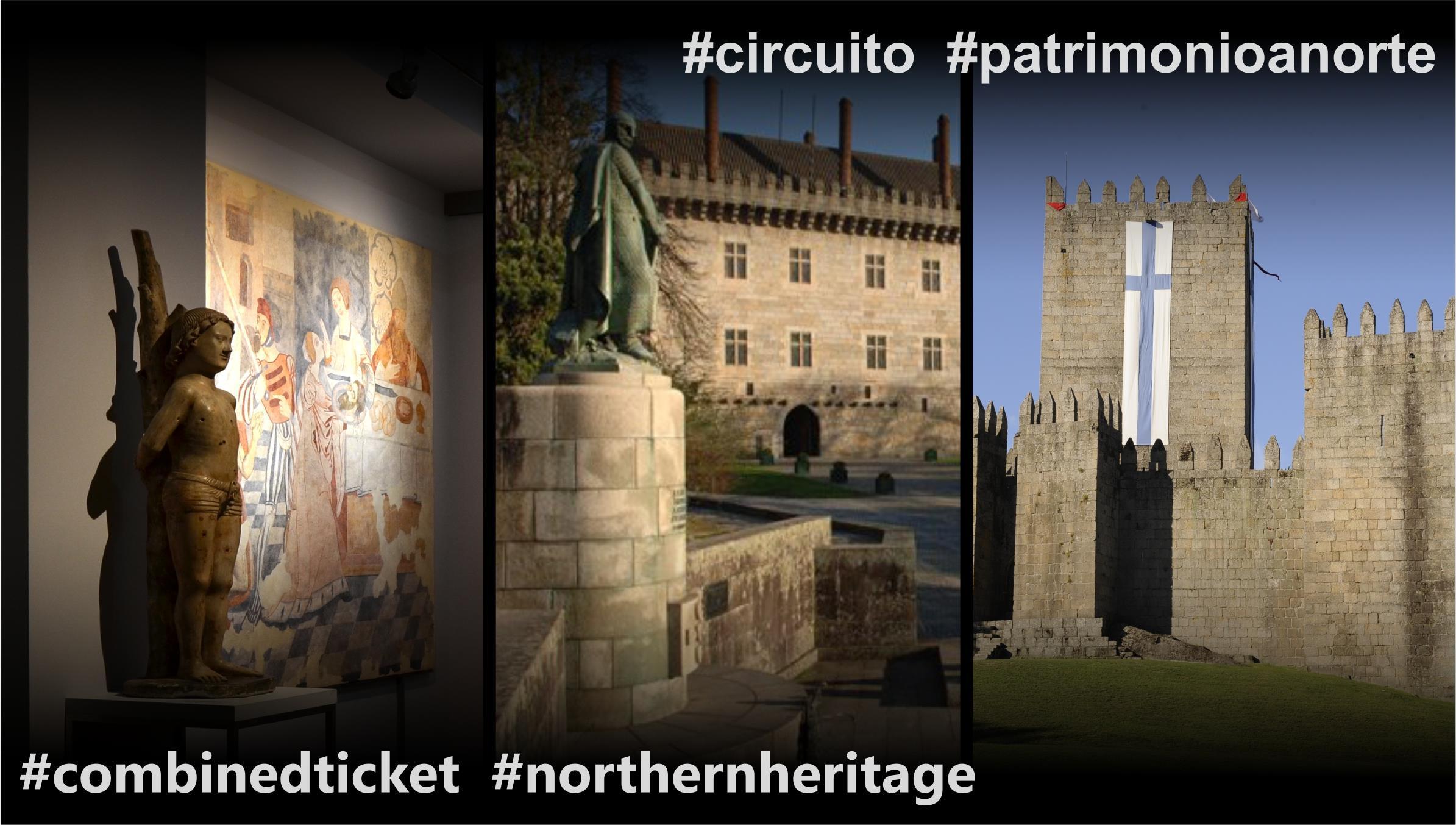Combined Ticket - Guimarães II

Open: Tuesday to Sunday 10 a.m- 6 p.m
Closed: Monday; 1st January; Easter Sunday; 1st May; 25th December; 24th June (municipal holiday)
Residents in Portugal can enjoy 52 days of free entry per year to museums, monuments, and palaces, on any day of the week. Learn more at museusemonumentos.pt | Access 52 tickets cannot be issued through this online ticket office. Please request them at the physical ticket office of one of our Museums and Monuments.
Open: Monday to Sunday 10 a.m-6 p.m (last entry at 5.30 p.m)
Closed: 1st January, Easter Sunday, 1st May, 25th December and 24th June (municipal holiday)
Residents in Portugal can enjoy 52 days of free entry per year to museums, monuments, and palaces, on any day of the week. Learn more at museusemonumentos.pt | Access 52 tickets cannot be issued through this online ticket office. Please request them at the physical ticket office of one of our Museums and Monuments.
Open: Monday to Sunday 10 a.m-6 p.m (last entry at 5.30 p.m)
Closed: 1st January, Easter Sunday, Labour Day (1st May), 25th December and 24th June (municipal holiday)
The Watchtower is closed for rehabilitation. We apologize for the inconvenience.
Residents in Portugal can enjoy 52 days of free entry per year to museums, monuments, and palaces, on any day of the week. Learn more at museusemonumentos.pt | Access 52 tickets cannot be issued through this online ticket office. Please request them at the physical ticket office of one of our Museums and Monuments.
Alberto Sampaio Museum
The Alberto Sampaio Museum is located in the historical centre of Guimarães, where, in the 10th century, Countess Mumadona Dias ordered the construction of a monastery, which in the 12th century gave way to a Collegiate Church and a Museum in the 20th century, created to house the artistic heritage of the former Collegiate Church of Nossa Senhora da Oliveira and of other churches and convents of Guimarães.
Diverse, yet coherent and homogeneous in quality, the collection includes sculpture, carving, painting, ceramics, textiles and goldsmithing.
The 16th century painting nucleus stands out, especially the fresco "The beheading of St. John the Baptist", the "Lamentation Triptych" and the "Nursing Madonna between St. Bento and St. Jerome", the three attributed to the unappreciated "Master of Guimarães".
The Alberto Sampaio Museum also has the loudel in its custody, the military garment of incalculable historical value that King John I wore in the battle of Aljubarrota (1385) and donated to the Collegiate of Santa Maria da Oliveira. The same monarch also gave a magnificent silver-gilt triptych representing the Nativity cycle, which today forms part of the Museum's exceptional collection of liturgical goldsmithing, with examples from the 12th to the 19th century.
We look forward to your visit!
Duke of Bragança Palace
Built between 1420 and 1433 by order of the eighth Count of Barcelos, Dom Afonso, illegitimate son of King Dom João I, the Palace was the residence of the Dukes of Bragança during the 15th century, a title granted by his brother Dom Pedro, giving rise to one of the richest and most powerful manor houses on the Iberian Peninsula, the House of Bragança.
Despite being the residence of Dukes in the 15th century, it was subsequently abandoned and consequently ruined in the following centuries and was adapted to military barracks in the 19th century during the French invasions.
It was in the following century, between 1937 and 1959, that the Duke of Bragança Palace underwent a complex and extensive renovation, based on a project by the architect Rogério de Azevedo.
At the same time, the current collection was acquired, consisting of art pieces dating mainly from the 17th and 18th centuries, with special emphasis on tapestries, furniture, ceramics, paintings and armaments.
The Duke of Bragança Palace opened to the public on 25th June 1959, the year in which it also became the official residence of the President of the Republic in the north of the country.
Let yourself be taken by the grandeur and beauty of this space and don't forget to visit the São Miguel Church and the Guimarães Castle, all located on the Monte Latito, a gardened space of about 39 thousand square metres that serves as a leisure area for strolling between these three National Monuments.
We look forward to your visit!
Guimarães Castle
A symbol of Portugal’s origins and of King Afonso Henriques, the first king of Portugal, Guimarães Castle is one of the most emblematic monuments of Portuguese medieval imagery.
Its original construction dates back to the time of Mumadona Dias, who had it built in the middle of the 10th century to defend the monastery of Santa Maria de Guimarães from Moorish and Norman attacks.
Subject to various alterations over the centuries, the Castle of Guimarães has kept little of its original layout. In the 16th century, it was used as a jail, and in the following century it was also used as a royal hayloft and a quarry.
It was only in the first half of the 20th century that it was subjected to renovation, in a campaign led by the General Directorate of National Buildings and Monuments, which gave it the appearance it has today.
Open to the public since June 1940, on the occasion of the Commemorations of the VIII Centenary of the Foundation of Nationhood, Guimarães Castle, classified as a National Monument since 1910, is today one of the most visited monuments in the North.
Come find out why yourself. See you soon!